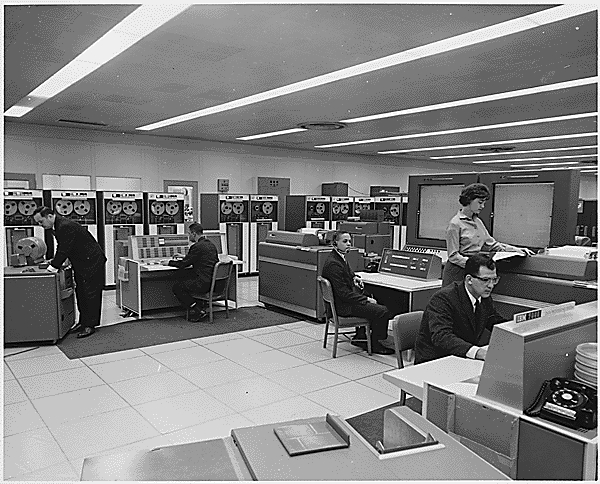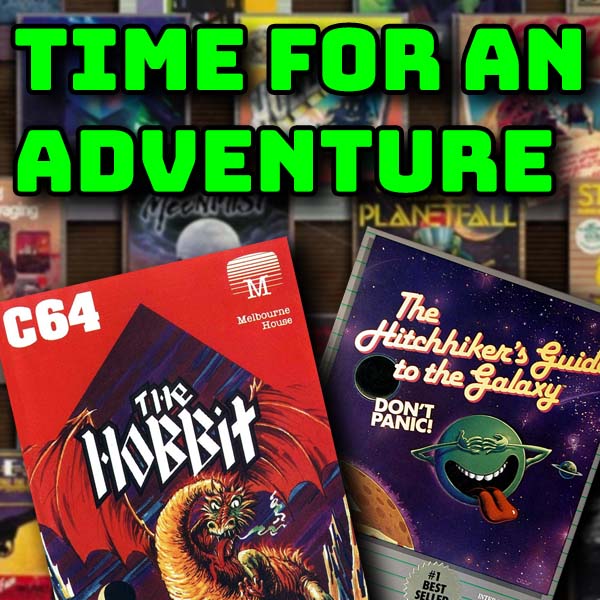
Bad Update Software Exploit for Xbox 360 – What is it? How does it work? Is it right for you?
30th March 2025
Play Halo from the start on your modded Xbox 360 – first 4 Master Chief main titles
28th April 2025Exercise your brain with adventure games – Infocom classics and retro computer titles
Computer games have been around for a long time now and we think of the old arcade games such as Space Invaders and Pong as being amongst the first ever written. But gaming started even before computers had visual display units.
The early mainframes used teletype machines for input and output. So you could type in information and the computer could then print out a reply. These allowed programmers to create text based games. For example noughts and crosses, or tic tac toe can be played by simply printing out the grid after each move. Even chess can be described as the movement of pieces between board locations and indeed Alex Bernstein at IBM wrote the first complete chess program in 1957 on an IBM 704 mainframe.
But another form of text based game also started to appear in the 1960s. These were strategy based games where the player input various commands that affected the outcome of some simulated world. One of the first was the Sumerian Game written in 1964 where the player controlled worker and food allocations to keep a civilisation alive. If you’ve ever played Yellow River Kingdom on the BBC Microcomputer Welcome tape, that’s pretty much the same game!
The game also had a number of slides that could be manually displayed as the game progressed to add a sort of graphic adventure feel.

Gameplay image : By IBM / Mabel Addis – https://archive.org/details/ERIC_ED014227/page/n187/mode/2up, Fair use, https://en.wikipedia.org/w/index.php?curid=64446518

Girl playing : By IBM – https://www.acriticalhit.com/sumerian-game-most-important-video-game-youve-never-heard/, Fair use, https://en.wikipedia.org/w/index.php?curid=64446621
But all of this ran on an IBM 7090 mainframe. At $2.9 million ($23 million in today’s money) this definitely didn’t rate as a home computer, so only a select few people ever got to experience these games.

By NASA – This tag does not indicate the copyright status of the attached work. A normal copyright tag is still required. See Commons:Licensing., Public Domain, https://commons.wikimedia.org/w/index.php?curid=5800051
But that didn’t stop the development of the text based game genre.
Collossal Cave
Fast forward a few years and a lot of research had been carried out in natural language processing to allow computers to break down sentences to get a basic understanding of what was being said. This allowed programmers to take simple sentences from the user and decode them into actions. By this time we also had visual display units, so the old teletype output was gone.
In 1975 Will Crowther, a programmer and caver, created a game where the player used text based, two word, commands to explore an underground cave system. He added dwarves and other fantasy features to make the gameplay more exciting and released the game under the name Adventure. This was further developed and expanded by Don Woods who added a lot of Tolkien’s Lord of the Ring style creatures.
In 1977 the game started to spread across ARPAnet, the grandfather of the Internet, and started to get ported to pretty much every computer system available. Again you have to remember that these computers had very little graphics capabilities so these games where the AAA titles of the day.
More and more of these ‘Adventure’ games started to appear and various games development companies started to specialise in building them for the emerging home computer market.
By the 1980s home computer boom text, and now with added graphics, adventure games were one of the best selling game genres.
Where Are They Now?
If you look at the current mainstream game titles you’ll be hard pressed to find any text adventures, or as they are now known, Interactive Fiction.
But they do still exist and they are still being written.
If you head over to the Interactive Fiction Database at https://ifdb.org/ you’ll see what I mean.
Here you’ll find all the latest games and reviews for this niche gaming market.
Getting Back to the Retro Scene
But in this video I want to take you back to the heyday of the text adventure and explore some of the great titles that you can still play today.
I’ll be highlighting a few but there were literally hundreds of games from a whole range of developers. These games will not tend to make it onto any top 10 lists of games so you’ll have to go digging for them in old magazines and reviews. If you haven’t watched my videos on reliving the Spectrum and Commodore 64 years then please do have a look at those to see how to explore those systems. But whatever your computer of choice the Internet Archive has almost every computer magazine online for you to browse through and find loads of games to try.
Infocom
To start with let’s look at the big name in text adventures, Infocom.
Infocom specialised in this genre and became sort of the gold standard for Adventure games. Many of their titles made it to the top ten best sellers for all platforms and they are responsible for Z code, which was their bespoke way of coding the game data and functionality. This means that with a Z Code interpreter you can play any of their games, even today.
One of the most popular Z Code interpreters is Frotz which is available for Windows, Linux and MacOS, along with Android and iOS.
With a version of Frotz all you then need are the Z Code files for the games. You can get these from the The Obsessively Complete Infocom Catalog at https://eblong.com/infocom/
All you need to do is to find the game you want to play, so let’s go for one of the most popular, The Hitchhiker’s Guide to the Galaxy. Here you’ll find a range of versions for the game so we’ll go for the final r60 version.
This will download a .z3 Z Code file that you can then open up with Frotz.
Playing The Games
So now that the game is loaded you’re into your first Interactive Fiction title.
The basic idea is that the computer will describe what you can see and then prompt you for a command. You type in the command and the game proceeds from there.
Part of the fun in the game is to work out what the computer can understand. The basic movement commands are based on the compass, so North, South, East, West, NorthEast, etc. You’ll also be able to use up and down, in and out when appropriate. If you see an object you can pick it up using the GET or TAKE command, and you can examine things with the EXAMINE command to check for hidden detail.
As you explore you’ll pick up items. You can see what you’re carrying by typing in INVENTORY. As you can only carry a certain amount, you’ll eventually have to DROP unwanted items. But always look out for bags and rucksacks or other things that you can use to carry more items.
The commands you use will always be very simple. Stick to direct text e.g. GO WEST, TAKE BOOK, HIT GOBLIN WITH SWORD rather than anything long winded.
The objective on the games is to explore the whole game world solving puzzles and collecting treasure or knowledge as you go. Almost everything you come across has some use, apart of course from the decoys, so take a note of everything you see and hear.
Mapping the world is also a great idea as you’ll never be able to find your way around without one. For this I tend to use a browser app at https://www.trizbort.io/. This lets you draw out and show how various locations are connected.
You’ll also find there are lots of online hints and tips, as well as full solutions to all the games. But please don’t give up too quickly as simply reading a list of commands on how to solve the game really does kill all the fun. These games are great to play along with friends either together or simply discussing how you managed to solve the puzzles. I used to play a number of Level 9 adventures on my BBC Micro with my best friend and we’d track each other’s progress as we both tried to complete the game.
Playing a Bit of Hitchhiker
So let’s get into a bit of gameplay in Hitchhiker’s Guide. This scene is when Arthur and Ford Prefect beam onto the Vogon space ship and Arthur can’t understand the Vogon commanders announcements. If you’ve read the book you’ll know he needs to put a babel fish in his ear. But how to get one?
Using Emulators
Infocom and the whole Z Code system will let you play hundreds of adventures including a lot of the new ones. But there were of course a whole raft of other software houses creating great games for the home computers of the day.
First then we need to have some way of playing these games. If you’ve got an original machine then you’re good to go, but most of us will need to find an emulator to turn our modern computer into a retro home computer.
You’ll find emulators for absolutely every home computer system and indeed I’ve created videos on most of the major systems. So please do have a look at those if you need some help. ZX Spectrum, Commodore 64, BBC Micro, Atari 8 bit are all very well catered for and you’ll also be able to easily find any of the software titles in various fan websites or on the Internet Archive.
Installing an emulator is usually as easy as downloading the code archive, extracting it onto your hard drive and then running the main executable file or installer, just as I’m doing here to turn my PC into a Commodore 64 with the VICE emulator.
So armed with an emulator let’s see if we can find some adventure games for the Commodore 64.
There are a number of websites such as Lemon64.com that list and review the games but unless you’ve got a specific title in mind it can be hard to work out which games to give a go. Adventure games do take more time and effort to play so you do need some sort of pre screening to make sure you’ve got the right title.
I find the old computing magazines the best source for this sort of information.




